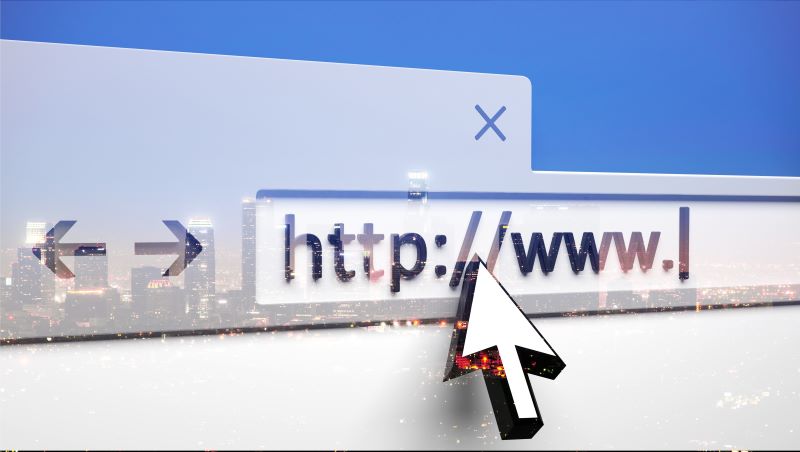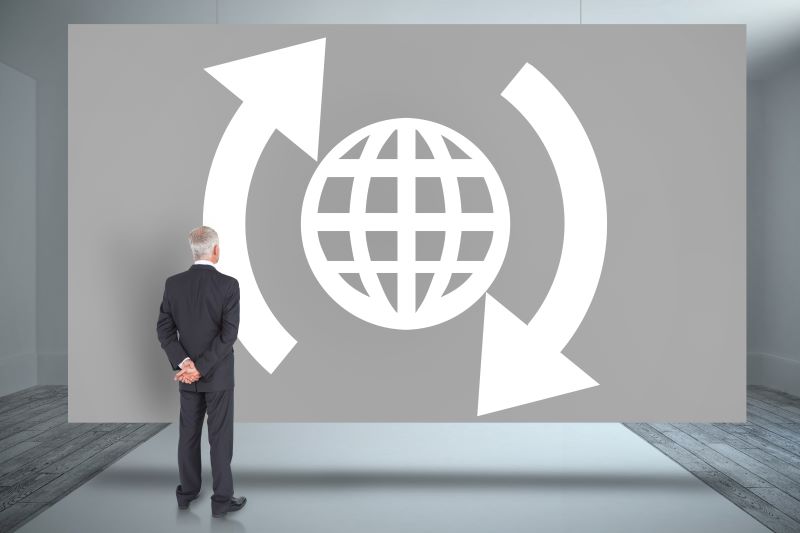Common Error Codes With An HTTP Proxy
Do you know the basic HTTP proxy meaning? If not, you’re about to learn. This guide explores the ins and outs of HTTP proxies and highlights their many benefits. It also offers insight into the most common error codes you might encounter while using HTTP proxies and provides advice on how you can handle them.
Let’s jump in!
HTTP Proxy Meaning

To start, let’s define HTTP proxy.
An HTTP proxy acts as an intermediary between your device and the internet. In simpler terms, it’s like a middleman that relays communication between web browsers that use HTTP and the websites you visit.
It works like this:
- Your web browser initiates a request to access a website.
- The request is sent to the HTTP proxy server instead of directly to the website.
- The proxy server receives the request and forwards it to the target website.
- The website sends its response back to the proxy server.
- The proxy server then relays the response back to your web browser.
What is an HTTP proxy for iPhone?
An HTTP proxy for iPhone acts like a middleman between your iPhone and the internet. It works similarly to proxies on other devices.
What does open proxy mean?
An open proxy server, also sometimes called a public proxy, also acts as an intermediary between your device and the internet. However, the key difference is that an open proxy is freely accessible to anyone on the internet, without any authentication required.
HTTP vs. HTTPS proxies
While learning about HTTP proxies, you may have also come across terms like HTTPS proxies. What are the differences between these proxy types, and how do you know which one to use?
Here’s a quick breakdown to help you decide:
| HTTP Proxy | HTTPS Proxy | |
| Purpose | Ideal for basic tasks like web browsing and managing web traffic.
Understands and modifies HTTP traffic (like web pages and forms). |
Similar to HTTP proxies but specifically designed for secure communication.
Can handle encrypted HTTPS traffic (often used for online banking and shopping). |
| Security | Offers minimal security as the traffic is unencrypted and can be intercepted | Provides better security for web traffic by encrypting communication between your device and the proxy server.
The communication between the proxy and the website might still be unencrypted. |
| Transparency | Websites see the IP address of the proxy server, not your original IP address. | Similar to HTTP proxies, websites see the proxy’s IP address. |
| Speed | Generally faster compared to HTTPS proxies due to less processing overhead for encryption. | Might experience slightly slower speeds due to the encryption process. |
| Use Cases | Web browsing, basic content filtering, caching web data, etc. | Secure web browsing, online banking, shopping, etc. |
What Are HTTP Proxy Error Codes?

When using a proxy server, encountering an HTTP error code indicates a failed web request. The specific code identifies the type of proxy issue, allowing you to take appropriate troubleshooting steps.
HTTP proxy error codes and responses are often represented by 3-digit numbers. The first number identifies the class.
There are five proxy error and response classes, starting with one and going up to five. The classes are as follows:
- 1xx code: Informational response
- 2xx code: Successful response
- 3xx code: Redirection response
- 4xx code: Client error
- 5xx code: Server error
HTTP proxy errors can stem from various issues on either the client side (your device), the proxy server itself, or the target website you’re trying to reach. Here’s a breakdown of some common culprits:
Incorrect proxy settings
Incorrect proxy settings can arise from various mistakes during configuration or due to external factors. Here’s a breakdown of some common reasons why you might encounter issues with your proxy settings:
- Typos: Mistakes when entering the proxy server address, port number, username, or password can lead to incorrect settings. Double-checking for typos and ensuring everything is spelled accurately is crucial.
- Incorrect information: Using outdated or irrelevant proxy information can cause connection issues. Make sure you’re using the correct details provided by your proxy service or network administrator.
- Protocol mismatch: Proxy servers might be configured to handle specific protocols like HTTP or HTTPS. If the protocol settings are incorrect in your browser or application, communication with the proxy server might fail.
- Missing proxy script: If you’re supposed to use a proxy script for automatic configuration, a missing or incorrect script URL can lead to problems.
- Outdated PAC file: Proxy Automatic Configuration (PAC) files define the rules for proxy usage. An outdated PAC file might not reflect current proxy settings or network conditions, causing connection issues.
- Conflicting configurations: In some cases, your device or browser might have conflicting automatic proxy settings from different sources (e.g., network settings, browser extensions). This can lead to confusion and connection errors.
- Network restrictions: If you’re on a network with firewall restrictions or limitations on proxy usage, your settings might be overridden, preventing you from connecting through a proxy.
- DNS issues: Domain Name System (DNS) problems can indirectly affect proxy settings in rare cases. The DNS translates website addresses into numerical IP addresses. If there are issues with DNS resolution, it can hinder the communication process between your device and the proxy server.
Proxy server overload
Proxy server overload occurs when the proxy server receives more requests than it can handle effectively. It’s like having too many cars trying to use a single-lane road – things slow down, requests pile up, and eventually, the system struggles to keep up. Here are some of the key factors that can contribute to proxy server overload:
- Large number of users: If a proxy server is serving a very large user base, especially during peak usage times, the volume of requests can overwhelm the server’s capacity. This is more common for public proxy servers with many users compared to private proxies used by a smaller group.
- Resource-intensive tasks: Certain user activities on the proxy can be more resource-intensive than others. Downloading large files, streaming high-definition videos, or making frequent connections can put more strain on the server’s processing power and memory.
- Insufficient processing power: The proxy server’s central processing unit (CPU) is responsible for handling all incoming and outgoing requests. If the CPU isn’t powerful enough to manage the request volume, bottlenecks can occur, leading to overload.
- Limited memory (RAM): The proxy server’s memory (RAM) acts as a temporary workspace. If the RAM is insufficient to handle the number of concurrent requests and store temporary data, the server can become overloaded.
- Inadequate bandwidth: Bandwidth refers to the amount of data the proxy server can transfer in a given time. If the bandwidth is limited compared to the volume of data being transferred through the server, it can create congestion and overload situations.
- Outdated software: An outdated proxy server operating system or software might not be optimized for handling high request volumes efficiently. This can lead to inefficiencies and contribute to overload.
- Malware or security threats: In rare cases, malware infections or cyberattacks on the proxy server can consume resources and disrupt normal operations, potentially leading to overload.
Proxy server misconfiguration
Proxy server misconfiguration refers to mistakes made in setting up or managing a proxy server, leading to malfunctions or unexpected behavior. These misconfigurations can cause a variety of problems for users trying to access the internet through the proxy.
Here are some common causes of proxy server misconfiguration:
- Wrong IP address or port: If the proxy server address or port number is incorrectly configured, the proxy won’t be able to establish connections with other servers, rendering it unusable.
- Authentication issues: For authenticated proxies, mistakes in username, password, or authentication type can prevent users from successfully connecting through the proxy.
- Protocol mismatches: Proxy servers might be configured to handle specific protocols like HTTP or HTTPS. If the protocol settings are incorrect, communication with websites or other servers can fail.
- Overly restrictive rules: Firewalls are often used for security purposes on proxy servers. However, overly restrictive firewall rules can block legitimate traffic or prevent the proxy from communicating with essential servers, leading to malfunctions.
- Missing allowances: If the firewall isn’t configured to allow specific types of traffic needed for the proxy to function correctly, it can disrupt operations and cause problems for users.
- Outdated cache: Proxy servers can cache website data to improve loading times for frequently accessed websites. However, if the cached data isn’t updated regularly, users might see outdated versions of web pages.
- Cache size limits: An excessively large cache can consume storage space on the proxy server and potentially slow down performance. Conversely, a very small cache limit might not offer the intended benefits of content caching.
- Outdated software: Running outdated proxy server software can lead to security vulnerabilities, compatibility issues, and potential bugs that cause misconfigurations.
- Software bugs: Even with the latest software version, bugs or glitches can sometimes arise and lead to unexpected behavior or misconfigurations within the proxy server.
- Unintentional misconfiguration: Security vulnerabilities or exploits might be introduced due to unintentional misconfigurations, potentially compromising the security of the proxy server and user data.
Authentication issues
Proxy server authentication issues prevent you from accessing the internet through the proxy because the server cannot verify your credentials. It’s like trying to enter a building with an incorrect key – you have the right idea, but something isn’t allowing you in.
Here are some common reasons why you might encounter proxy server authentication problems:
- Typos: The most common culprit is simply mistyping your username or password when entering your credentials for the proxy server. Double-check for any errors in spelling or case sensitivity.
- Wrong credentials: You might be using outdated credentials or credentials meant for a different proxy server altogether. Ensure you’re using the correct login information provided for the specific proxy you’re trying to access.
- Missing settings: The proxy settings in your web browser or application might not be configured correctly. This could involve missing information about the username and password fields or incorrect proxy server address details. Double-check that all the necessary fields are filled in accurately.
- Authentication type mismatch: Some proxy servers require specific authentication types, like basic authentication or token-based authentication. If the type of authentication configured on the server doesn’t match what your device or browser is set to use, it will lead to authentication failure.
- Network connectivity problems: In rare cases, temporary network connectivity issues between your device and the proxy server can disrupt the authentication process.
- Proxy server issues: Technical problems on the proxy server itself, such as software glitches or authentication server malfunctions, can also lead to authentication failures. However, this is less common as proxy servers typically have measures in place to ensure authentication functionality.
Common HTTP Proxy Error Codes

Now that you know the basic HTTP proxy definition and understand the various issues that can cause HTTP proxy errors, let’s get into the specific error codes you might encounter. Here are some of the most common ones to be aware of:
HTTP 502 bad gateway
An HTTP 502 Bad Gateway error specifically related to a proxy server arises when there’s a communication issue between the proxy and the website you’re trying to access. While a regular 502 error indicates a problem between two web servers in general, in this case, the proxy acts as the first web server involved.
HTTP 503 service unavailable
An HTTP 503 Service Unavailable error related to a proxy server indicates that the proxy itself is temporarily unavailable and cannot fulfill your request. While a standard 503 error can occur on any web server, in this case, the proxy acts as the unavailable server.
HTTP 504 gateway timeout
An HTTP 504 Gateway Timeout error related to a proxy server occurs when the proxy fails to receive a timely response from the website server it’s trying to access on your behalf.
HTTP 407 proxy authentication required
An HTTP 407 Proxy Authentication Required error related to a proxy server indicates that you’re trying to access a website through a proxy that requires authentication, but your device or browser lacks the correct credentials.
HTTP 408 request timeout
An HTTP 408 Request Timeout error related to a proxy server occurs when the proxy doesn’t receive a complete request from your device within a specific timeframe. In essence, the proxy waits for instructions from your browser (like the website you want to access), but that information never arrives on time, so the proxy times out.
HTTP 505 HTTP version not supported
An HTTP 505 “HTTP Version Not Supported” error related to a proxy server arises when the version of HTTP your device uses to communicate with the proxy server is incompatible with the version supported by the proxy itself.
HTTP 400 bad request
An HTTP 400 Bad Request error related to a proxy server indicates that the proxy encountered a problem with the request it received from your device. In simpler terms, the proxy understands the language (HTTP version) you’re using, but the message itself is malformed or contains errors that prevent the proxy from processing it correctly.
HTTP 403 forbidden
An HTTP 403 Forbidden error related to a proxy server indicates that you’re trying to access a website through the proxy, but you lack the necessary permission. The proxy acts as a gatekeeper, and in this case, it’s preventing you from reaching the website even though it understands your request perfectly.
HTTP 404 not found
An HTTP 404 Not Found error doesn’t typically originate from the proxy server itself. This error code indicates that the requested resource (like a webpage) wasn’t found on the destination server, regardless of whether a proxy is involved.
Proxy authentication error 2606
A proxy authentication error 2606 specifically refers to an issue with OneDrive and its interaction with proxy servers. It indicates that OneDrive is unable to authenticate with the proxy server you’ve configured.
How to Resolve HTTP Proxy Error Codes

As you can see, there are many potential errors you might run into while using proxies. The good news is that there are also many steps you can take to resolve HTTP proxy error codes and get back to work.
The following are some of the most effective strategies you can utilize when you face an error code:
Check proxy settings
Start by checking your proxy settings and making sure that the server address, port, username, and password are all correct. If these settings are incorrect, they may cause connection issues and result in various error codes.
Clear cache and cookies
When you run into HTTP 400, 403, and 404 code errors, one of the most useful techniques is to clear your browser’s cache and cookies.
Clearing cache and cookies means removing temporary data stored by your web browser. This data can build up over time and potentially slow down your browsing experience, cause unexpected website behavior, or even introduce privacy concerns.
The exact steps to clear cache and cookies will vary depending on the web browser you’re using. Here are some general guidelines to help you get started:
- Open your web browser.
- Locate your browser’s settings menu. This is usually found under an icon resembling three dots or lines in the top right corner.
- Find the Privacy and Security settings. The specific wording might differ slightly between browsers.
- Look for options related to clearing browsing data or clearing cache and cookies.
- Choose the timeframe for what you want to clear. You can usually select to clear data from all time, the last hour, day, week, or month.
- Confirm the selection and clear the data.
Update browser
If you’re working with an outdated browser, you may be more likely to run into issues with your HTTP proxies (or any other tools you might be using). Take some time to check and update your browser if needed.
Check internet connection
An unsteady internet connection could also be the culprit behind your proxy server issues. Make sure your connection speed and performance are where you expect them to be, or reset your modem or router to ensure a more stable connection.
Disable unnecessary extensions
Some browser extensions can interfere with your proxy settings and cause problems with specific websites. Consider disabling browser extensions you aren’t actively using and see if that helps things function more smoothly.
Contact the proxy provider
If all your other efforts have been unsuccessful, you may need to contact your HTTP proxy provider. There may be an issue on their end that is causing your problems, or they may have more detailed advice they can offer on fixing the issue.
Combat Proxy Errors with Reliable Proxies

Choosing reliable proxies requires considering your needs and comparing different providers. Here’s a breakdown of key factors to keep in mind:
Identify your needs
Consider your unique needs. In other words, what do you want or need proxies for (web scraping, privacy, bypassing geo-restrictions, etc.)? Clarifying your goal helps you narrow down the proxy types that will work best for you.
Think about your bandwidth needs, too. How much data will you be transferring? Choose a plan with sufficient bandwidth to avoid slowdowns and other potential errors.
Evaluate proxy providers
Now that you know why you need proxies, you can start evaluating different proxy providers to find the right fit. When comparing providers, be sure to consider the following:
- Reputation: Choose a well-established provider with a positive track record. Look for reviews and user experiences.
- Pricing: Compare pricing plans based on features, bandwidth, and number of proxies needed. Consider free trials if offered.
- Features: Look for features like proxy rotation, geo-targeting, uptime guarantees, and 24-7 technical support.
- Security: Ensure the provider offers secure connections to protect your data.
Test before you commit
The most reputable providers will offer free trials so you can test their service before committing. When you’re experimenting with different services, pay attention to the user experience and make sure the tool is easy to use and doesn’t present you with a lot of error codes or other issues.
Final Thoughts

Congratulations — you now know what HTTP proxy means and can define HTTP Proxy with confidence. You also know how to navigate the most common HTTP proxy error codes!
Do you need help selecting an HTTP proxy that helps you work efficiently and reduces your likelihood of encountering error codes in the first place? If so, Rayobyte has got you covered.
Rayobyte offers reliable, high-performing proxies that work for personal and professional needs. Whether you only know the basic HTTP proxy meaning or are a more seasoned proxy user, these proxies will help you get the job done. Sign up today for a free trial.
The information contained within this article, including information posted by official staff, guest-submitted material, message board postings, or other third-party material is presented solely for the purposes of education and furtherance of the knowledge of the reader. All trademarks used in this publication are hereby acknowledged as the property of their respective owners.




